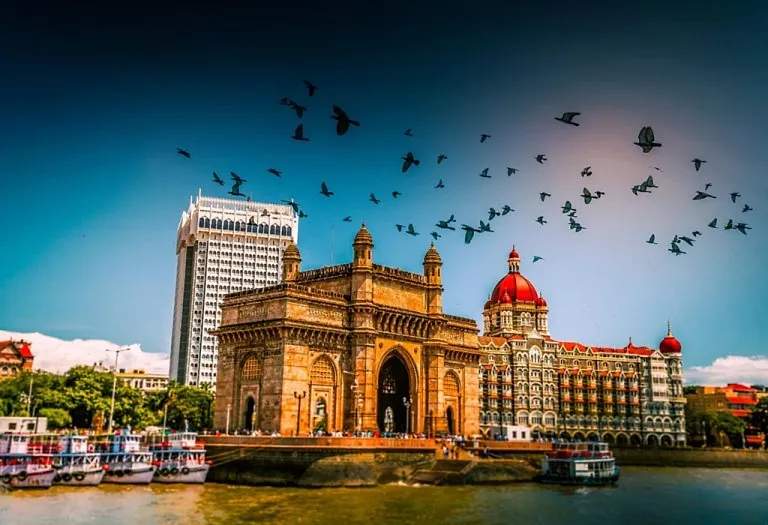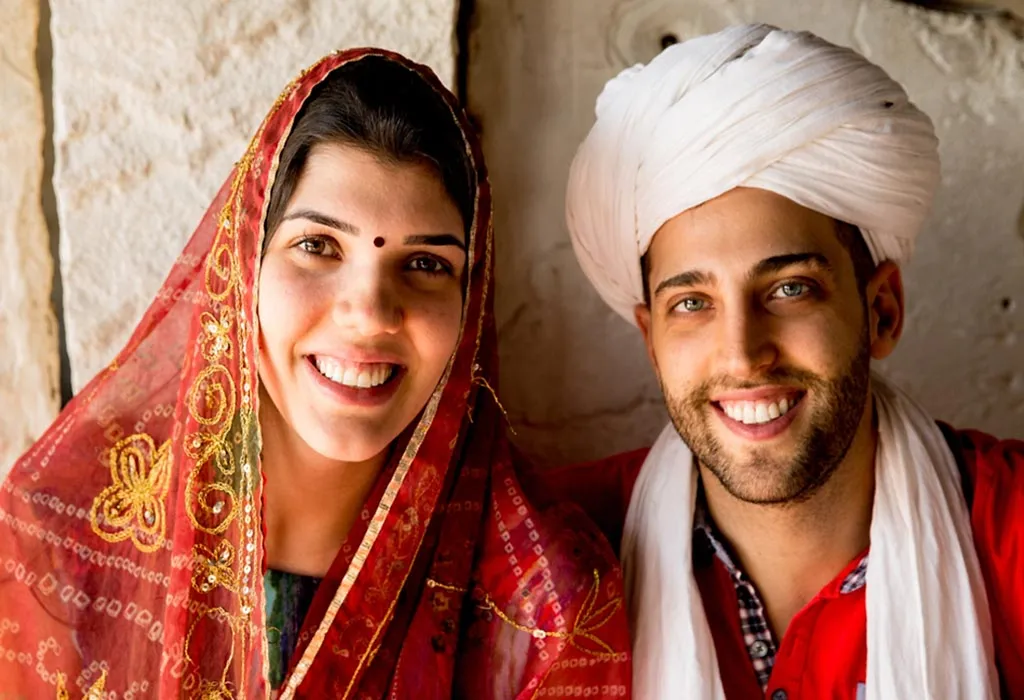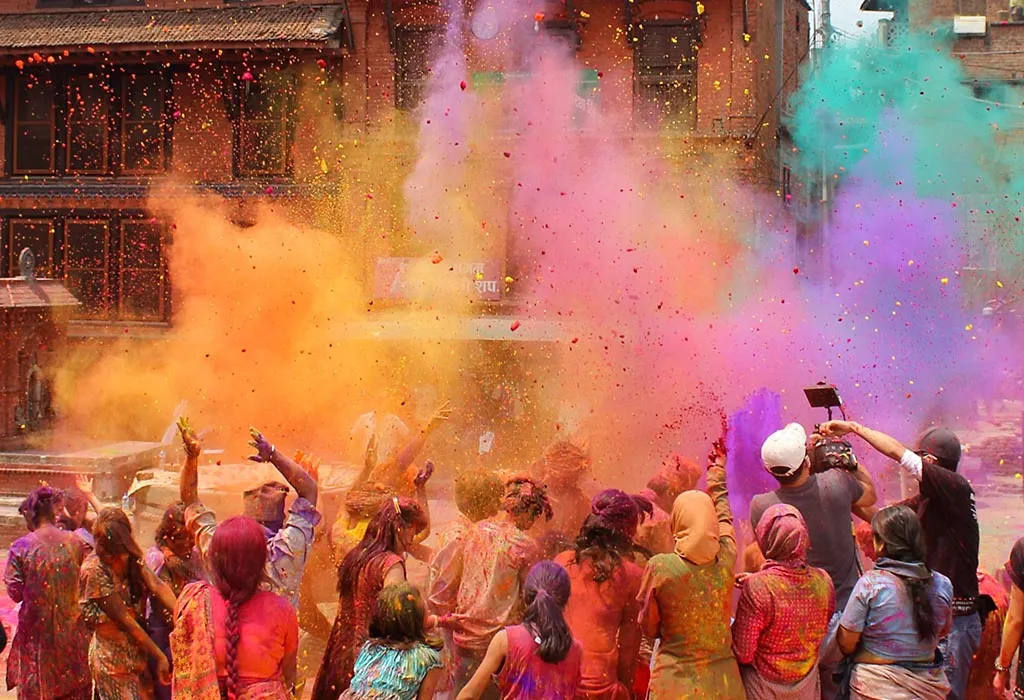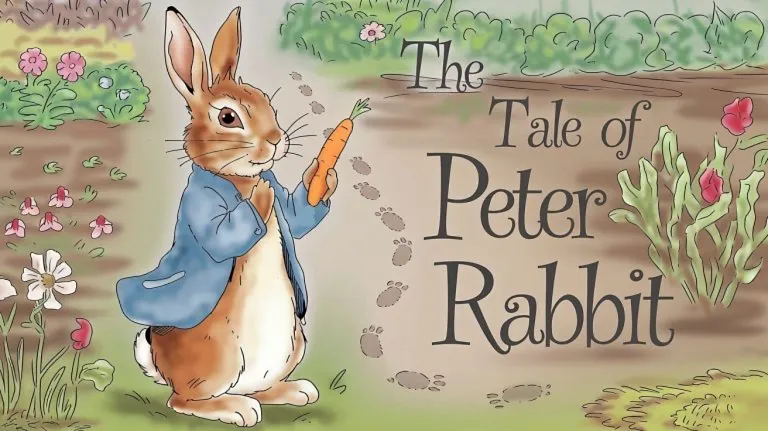126 Interesting Facts about India for Kids
If the world had an emblem for diversity and variety, India would undeniably claim that title. This enchanting land, steeped in rich history and vibrant traditions, beckons exploration and discovery. It’s only fitting that we impart a wealth of knowledge to our children about this incredible nation. From the majestic Himalayan peaks to the sun-kissed beaches of Goa, India unfolds like a captivating storybook, each page revealing a new facet of its charm. As we embark on this journey to uncover interesting facts about India for kids, let us delve deeper into the tapestry of its wonders, ensuring our children appreciate the extraordinary legacy and beauty that this country generously shares with the world.
Amazing Facts About India That Children Should Know
Children love information, so here are a few fun facts about India for kids.
Geographical Facts
Nestled in South Asia, India is a vast and diverse country known for its rich tapestry of landscapes, spanning from the towering peaks of the Himalayas in the north to the sun-drenched beaches along its extensive coastline. In this exploration of geographical facts, we unravel the diverse terrain and natural wonders that contribute to India’s breathtaking and varied topography.
- India is the seventh-largest country in the world, with an area of 32,87,590 square kilometres.
- India is the second most populated country with a population of 1.2 billion.
- The Tropic of Cancer passes right through the middle of our country.
- Chilika is the largest lake in India.
- Cherrapunjee is the wettest place in India with an annual rainfall of about 1200 centimetres.
- Ganga is the longest river in India, flowing through a length of 2525 km.
- The coldest place in India is Dras, which is located in the western part of Ladakh.
- Kanchenjunga, with an altitude of 8,586 meters, is the highest mountain peak in India.
- The largest state and smallest states in India are Rajasthan and Goa respectively.
- While the highest point of India is Kanchenjunga, the lowest point of India is Kuttanad.
- The world’s largest mangrove forest is located on the Bay of Bengal.
Culture Facts
Embarking on a journey through the heart of South Asia, we delve into the captivating world of India’s cultural richness. Join us as we explore the fascinating cultural facts that define this diverse nation, where every dance, festival, and artistic expression tells a story of a civilization that has thrived for centuries.
- The Indian culture is one of the oldest in the world, going back to about 4,500 years.
- India saw the birth of two of the most popular religions; Hinduism and Buddhism. A good 84 per cent of the total population identifies itself as Hindu.
- Indian religion facts – Hinduism and Buddhism are not the only religions we find here. Our nation is filled with so many religions, like Islam, Christianity, Sikhism, Jainism and more.
- The Taj Mahal located in Agra is one of the seven wonders of the world.
- India boasts of several dance forms such as Bharatanatyam, Kathakali, Kuchipudi, Odissi, and Manipuri.
- Indian clothing facts for kids – Each state here produces a different style of clothing. From sarees to lehengas to lungis and kurtas, India has it all.
- India has 22 official languages.
- Sri Ranganathaswamy Temple in Tamil Nadu is the largest temple in India (156 acres).
- The ancient Indus Valley Civilisation is over 8000 years old.
- India was once the hub of Buddhism and emperor Ashoka helped spread it around the world, particularly South East Asia.
- India has a popular way of greeting by joining hands and saying Namaste. The Sanskrit meaning of this word is “the divine in me bows to the divine in you”.
Historical Facts
Here are a few ancient India facts for kids –
- India has contributed so much to the field of mathematics. Branches like algebra, calculus and trigonometry find their roots here. Zero was invented by Aryabhata, who was an Indian.
- Chess happens to find its roots in India.
- A good peaceful Indian fact for children is that we haven’t invaded any country in our history.
- The world’s first university, the University of Takshashila, was built in 700 B.C.
- All the European languages were derived from Sanskrit, which happens to be the oldest and richest language, again, from India.
- In 100 BC, the decimal system was invented in India.
- Baudhayana is the genius who calculated the value of Pi. He was an Indian.
- Ayurveda is the first stem of medicine that originated in India.
- Alexander’s Army turned back once they entered India as they were terrified of the powerful army of the Nanda empire.
- The Dutch Navy was defeated decisively by Marthanda Varma of Travancore in 1741.
- The Iron Pillar of India, constructed by Chandragupta II, is popular for its high resistance to corrosion because of its unique metal composition.
Ocean Facts About India
The Indian Ocean, spanning an extensive area of 70.56 million sq. km, stands as the third-largest ocean globally. Let’s delve into some fascinating facts and intriguing details about this vast body of water.
- Named after India, the Indian Ocean is also referred to as the Sindh Mahasagara in India, encompassing approximately one-fifth of the Earth’s surface water.
- Encompassing four continents – Asia, Australia, Africa, and Antarctica, the Indian Ocean serves as a connecting link for 18 Asian countries, 16 in Africa, and around 56 islands and island groups.
- Approximately 6,000km of river runoff from the Ganga and Brahmaputra rivers contributes to the Indian Ocean’s water volume.
- The Indian Ocean serves as a habitat for a diverse array of aquatic and marine animals, including turtles, seals, and sea cows.
Science Facts
From pioneering contributions in mathematics and astronomy to modern advancements in space exploration and technology, India’s scientific journey is both profound and dynamic. Join us as we embark on an exploration of science facts that showcase the nation’s enduring commitment to discovery and progress.
- The initial instances of cataract surgeries date back to the 3rd century when a physician from India, named Sushruta, pioneered these procedures.
- The ancient Indian astronomers made significant contributions, with Aryabhata propounding the heliocentric model centuries before Copernicus.
- The ancient medical treatises like Ayurveda originated in India, emphasizing holistic health practices and herbal remedies.
- In 1930, physicist C.V. Raman won the Nobel Prize in Physics for the discovery of the Raman Effect, demonstrating the scattering of light.
- The Indian Space Research Organisation (ISRO) has achieved remarkable feats in space exploration, including the Mars Orbiter Mission and Chandrayaan missions to the Moon.
- India is a nuclear power, with notable advancements in nuclear science and technology, exemplified by the Pokhran nuclear tests.
- India’s agricultural transformation in the mid-20th century, known as the Green Revolution, significantly increased food production through advanced farming techniques.
- In 2014, India became the first Asian nation to reach Martian orbit and the first in the world to do so in its maiden attempt, with the Mangalyaan spacecraft.
- Indian scientists have been recognized with Nobel Prizes, including physicist S. Chandrasekhar and chemist Venkatraman Ramakrishnan, contributing to global scientific acclaim.
- There is a contention that the Vedas made references to gravity well before the time of Isaac Newton.
Animal Facts
Dive into the mesmerizing world of fauna as we explore intriguing animal facts that highlight the incredible diversity of wildlife in India. From the majestic Bengal tiger prowling the dense jungles to the elusive Indian elephant ambling through vast landscapes, India is a treasure trove of unique and captivating creatures.
- India has close to 500 wildlife sanctuaries.
- The Eastern Himalayas, Western Ghats, and Indo-Burma are the three hotspots for biodiversity.
- The Asian Elephant, Bengal Tiger, Asiatic lion, Mugger crocodile are a few threatened species found in India.
- India is home to around 1300 species of beautiful birds.
- The Bengal Tiger is the national animal of India.
- The peacock is the national bird of India.
- The river dolphin of the Ganges is the national aquatic animal of India.
- The Himalayan blue sheep is found only in India.
- The Sarus crane is one of the biggest cranes in India.
- Coming second to New Zealand, India has the highest population of sheep in the world (75,000,000).
- The snow leopard, which is found in the Himalayan mountains, is so elusive that it is named the ghost cat.
Facts About Indian Currency
Delve into the economic heartbeat of India with a journey through facts about its currency. From the historical evolution of the rupee to the intricate designs adorning banknotes, each rupee carries a story reflecting the nation’s economic heritage and resilience.
- India minted a zero rupee note to make a point about the NGO 5th pillar’s move to fight corruption.
- Every Indian currency note has 15 languages on the reverse side and two on the front, which are English and Hindi.
- Back in the day, the Indian five-rupee coin was smuggled all the way to Bangladesh and was used to make razors.
- Indian notes are made of cotton and cotton rag.
- Shortly after the India – Pakistan divide, Pakistan used the Indian Rupee notes up until they could mint their own money.
- We don’t have 5,000 and 10,000 rupee notes now, but between the years 1954 and 1978, these were in circulation.
- The Ministry of Finance issues one-rupee notes.
- Every note has a depiction of India.
- A damaged or torn note can be exchanged at local banks.
- Destroying money is considered an offense punishable by law.
- In 2010, the Indian government held an open competition to design the new symbol of the Indian rupee. An Indian academic, D Udaya Kumar won the competition by designing the symbol – ₹.
- The Indian Rupee comes in various denominations, including coins and banknotes. Coins are issued in denominations of 1, 2, 5, and 10 rupees, while banknotes are available in denominations of 10, 20, 50, 100, 200, 500, and 2000 rupees.
- The first official currency in India was the “Rupiya,” introduced by Sher Shah Suri during his rule in the 16th century.
Facts About Sports
Step into the dynamic arena of Indian sports as we uncover fascinating facts that transcend cricket, showcasing the nation’s prowess in diverse athletic disciplines. From historic Olympic achievements to the fervor surrounding the Indian Premier League, India’s sports landscape is a testament to passion, perseverance, and excellence.
- Dhyan Chand, the hockey legend, was offered the rank of field marshal in the German army by Hitler. He refused the offer and led the Indian team to win gold in the Berlin Olympics of 1936.
- Sarfaraz Khan was only ten years old during the first IPL match. Now he is 24.
- Five international men’s Kabbadi tournaments have been held, and India won all of them.
- India has won 26 medals in the Olympic Games.
- Martial arts or the sport of self-defense finds its roots in India.
- The first time India participated in the Olympics was in 1900.
- A poet called Gyaydevji came up with this game called “Parambadham”. That is today’s snakes and ladders for you.
- Polo too finds its roots in India. The game has gone through a lot of modification from the original, though.
- Hockey is India’s national game.
- The IPL has the second-highest amount of money spent on it, after the NBA.
- Kila Raipur Sports Festival is a rural winter festival running since 1933. This festival conducts rural games of Punjab, like horseback acrobatics, bullock cart races, etc., that demonstrate farmers’ strength.
Indian Music Facts
Embark on a melodic journey through the rich tapestry of Indian music, where ancient traditions harmonize with contemporary expressions. From classical ragas that have echoed for centuries to the vibrant beats of Bollywood, India’s musical heritage is a celebration of cultural diversity and artistic innovation.
- Gandharva Mahavidyalaya was India’s first music school.
- Each state produces a different kind of folk music. A few examples are Dandiya from Gujrat, Bauls from Bengal and Lavani from Maharashtra.
- Bageshwari Qamar is the first shehnai player of India.
- Sarod is an instrument that is exclusively Indian.
- The tabla, too, is a musical instrument that was made first in India.
- Banjaran was the first folk album of India that contained folk songs from Gujarat and Rajasthan.
- The national anthem was written by Rabindranath Tagore and first sung in a rally at Kolkata.
- The veena is a beautiful instrument that was first made in India.
- The Ladybirds was the first India band that only had women.
- Carnatic music is one of the oldest classical forms of music.
- Indian ranks 20th among other countries in the Global Influential Music Index.
Facts About Indian Festivals
Immerse yourself in the kaleidoscope of colors, traditions, and celebrations as we explore facts about Indian festivals. From the dazzling lights of Diwali to the exuberance of Holi, each festival is a cultural mosaic, weaving together ancient rituals and modern joyous revelry.
- Diwali is the festival of lights. It is significant of the return of Rama and Sita after defeating Ravana.
- Holi is the festival of colours, and it marks the beginning of the new year in the Hindu calendar.
- The most popular Islamic festival of India is Eid. It marks the end of the holy month of Ramzan.
- Navaratri is considered the Hindu festival of dance and worship of Hindu deities and is celebrated for nine days.
- Ganesh Chaturthi is held in reverence of Lord Ganesha and is a popular festival throughout India, more so in Mumbai.
- Onam is a harvest festival, exclusive to the people of Kerala.
- Janmashtami is another popular festival that revolves around Lord Krishna.
- Pongal is the Tamil New Year and is the festival of harvest.
- The Sikhs celebrate Baisakhi to mark the commencement of the time of harvest.
- Karwa Chauth is a festival that Hindu women in the North celebrate, where they pray for their husbands’ long life.
- Kumbh Mela is a popular pilgrimage festival in India that sees one of the largest gatherings in the world of religious pilgrims.
Indian Food Facts
Savor the flavors and aromas of India’s culinary landscape as we uncover fascinating facts about its diverse and delectable cuisine. From the aromatic spices that define Indian dishes to the regional specialities that tantalize taste buds, India’s food culture is a gastronomic journey worth savoring.
- Karnataka is famous for its Bisi Bele Bath and Pulyogare.
- India produces the most amount of spices in the world.
- Chai is the most popular drink in India.
- Rice is the staple food of India. Here you will find different types of rice including white, black, red, brown, and sticky.
- The world’s hottest chilli, Bhut Jolokia, is from India.
- Fish is relished in coastal regions such as West Bengal and Kerala.
- West Bengal is the birthplace of the delicious Rasgulla.
- Tamil Nadu is famous for its Pongal.
- Dum biryani was originally a money-saving dish engineered by the Nawab of Awadh to feed the poor.
- The state of Haryana produces over 60% of the basmati rice in India.
- According to the Ayurveda medicinal system, there are three categories of food: Sattvic, Rajasic, and Tamasic. Sattvic includes minimally processed vegetarian food, Rajasic includes oily and spicy food, and Tamasic includes non-vegetarian food.
Other Interesting Facts
Embark on an eclectic exploration of miscellaneous facts that add layers to India’s tapestry. From the architectural marvels of ancient temples to the thriving film industry of Bollywood, these miscellaneous facts provide a glimpse into the multifaceted nature of India’s history, culture, and contemporary influence.
- India has the longest constitution in the world.
- India has one of the world’s largest postal networks.
- India has the fifth largest railway line network in the world.
- The Kumbh Mela is said to be visible from space.
- The idea of shampooing began in India.
- Indian scientists were the first to discover the presence of water on the moon.
- India has the second-largest English-speaking population after the United States.
- It is thought of India as a vegetarian country. In fact, not everyone in the country is vegetarian. As the Indian government’s survey, only about 29 per cent of the Indian population follows a strict vegetarian diet.
- India is also where the first diamonds were mined.
- India has the third-largest economy in the world using the PPP method.
- Chenab Rail Bridge is the world’s highest rail bridge.
FAQs
1. What Is the Full Form of India?
The full form of India is the “Republic of India.”
2. What Are Some Famous Indian Dances or Music Forms That Kids Might Like?
Kids can enjoy lively dances like Bollywood dance, Kathak, and Bhangra. In music, they might appreciate Bollywood songs, classical tunes, and traditional folk music like Dandiya and Garba.
3. Are There Any Famous Indian Legends or Stories That Kids Can Enjoy?
Kids can delight in captivating Indian legends and stories, such as the tales of gods like Krishna and Ganesha, the epic adventures of Ramayana and Mahabharata, and the wisdom-filled fables from the Panchatantra. These stories are rich in culture and carry valuable life lessons.
So, this was some interesting information about India for kids. Children are the future of our country, so it is our duty as parents to tell them everything that they need to know about this beautiful nation. India is our home, and it has given us so much, so it is only right that we tell our kids all the goodness that our country has to offer.
Also Read:
Florida Facts for Kids
Mexico Facts for Children
Facts About Australia for Kids
Interesting Facts About Asia for Children
Was This Article Helpful?
Parenting is a huge responsibility, for you as a caregiver, but also for us as a parenting content platform. We understand that and take our responsibility of creating credible content seriously. FirstCry Parenting articles are written and published only after extensive research using factually sound references to deliver quality content that is accurate, validated by experts, and completely reliable. To understand how we go about creating content that is credible, read our editorial policy here.
































